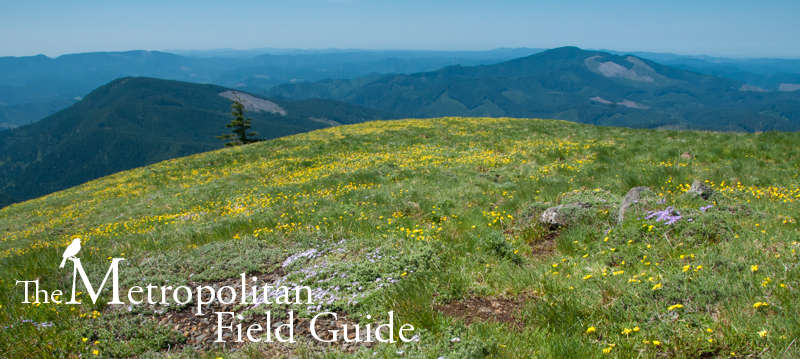This was originally published at Native Plants & Wildlife Gardens.
Finding native plants can be hard work. Here in Seattle, there are a handful of nurseries which carry a few odd native plants. There are native plant nurseries, but nearly all are by appointment or wholesale only. The awesome Washington Native Plant Society has plant sales, but they’re not very often. So if you’ve been studying plant lists and reading native plant books but can’t find many, if any of those plants what are you to do?
Collecting plants is one possibility, however, by the end of this article you may decide waiting until the next native plant sale is easier after all. It’s easy to be completely unethical and illegal and just go dig up a plant in your local forest, who would ever know right? But we’re not unethical and we like to follow the proper regulations.
On the law abiding side, it is possible and even free to collect plant materials from national forests. In the Gifford Pinchot National Forest in Washington, you can collect transplants with a free permit. However, you must visit a ranger station to get a list of prohibited plants and protected areas which are off-limits. You can get a permit which is good for two weeks which allows collecting plants including shrubs, ferns and other small plants up to 12′. In one year you can collect up to 10 of these plants. If you want more you will have to purchase a permit. Similarly in the Olympic National Forest, also in Washington, you can get a free personal permit to collect forest greenery.
On the ethical side, visit your local native plant society’s website and you’ll likely find a very long list of do’s and don’ts when it comes to collecting plants. Here are several document of guidelines; one from the Montana Native Plant Society (PDF), one from the Colorado Native Plant Society(PDF), another from the Delaware Native Plant Society (PDF) and finally one from my localWashington Native Plant Society. Nearly all these guidelines have similar points. Here is a summary:
- Study up and know how to identify plants, not just the ones you want to collect, but know what the rare and endangered plants look like so there are no mistakes.
- Make sure you have all your permits in order which you can do by visiting a ranger station. If it’s private land, be sure you have permission of the landowner.
- Take seeds or cuttings and avoid taking an entire plant.
- Avoid damaging the habitat your are walking through and do not visit the same site repeatedly.
- Collect from different populations, this is to ensure genetic diversity and also to not over-harvest one population.
- Take only a small amount of seeds or cuttings from any individual plant, instead gather from many different individuals.
- Keep records of when and where you collecting the plant material.
- Avoid visiting sensitive habitat areas, the forest service will also likely tell you where you’re not permitted to collect.
- Be prepared to explain what you’re doing and recommend the best methods for collecting.
- Lastly, be safe! Know when it’s hunting season and avoid collecting or wear bright orange vests. There was a story here not long ago about a plant collector harvesting salal who was shot and killed by a hunter.
 There are other creative ways to collect not only seeds and cuttings but entire plants. Here are a couple ideas and please share in the comments if you have other ways of obtaining native plants.
There are other creative ways to collect not only seeds and cuttings but entire plants. Here are a couple ideas and please share in the comments if you have other ways of obtaining native plants.
- Contact your local park department, arboretum or other nature areas to see if you can pick through the cuttings from their maintenance. I once contacted my local arboretum to see if I could collect dead and cut branches for insect hotels and they gave me permission to go through their waste piles. Seeds and cuttings could easily be obtained this way.
- Keep an eye out for salvage collection. If you know of a new housing development, road widening or other construction, contact the owners to see if you can salvage the plants before they start. Contact your local planning department to see if they can help.
If you do end up collecting seeds, here is a good resource from the California Native Plant Society about how to collect and clean your seeds and another from the Ladybird Johnson Wildflower Center.
Do you have any experiences collecting or salvaging or have other tips? Please share them in the comments below!






